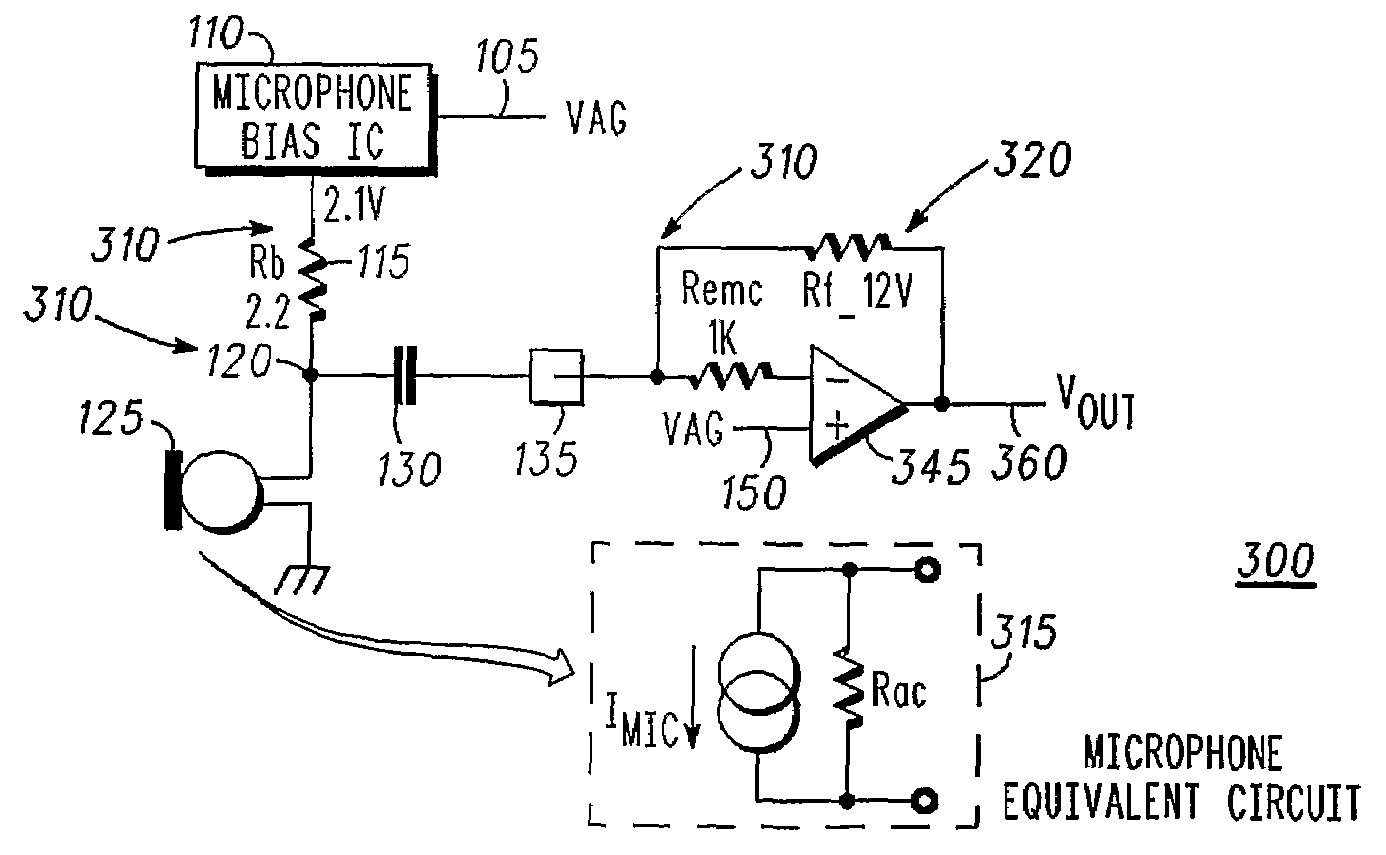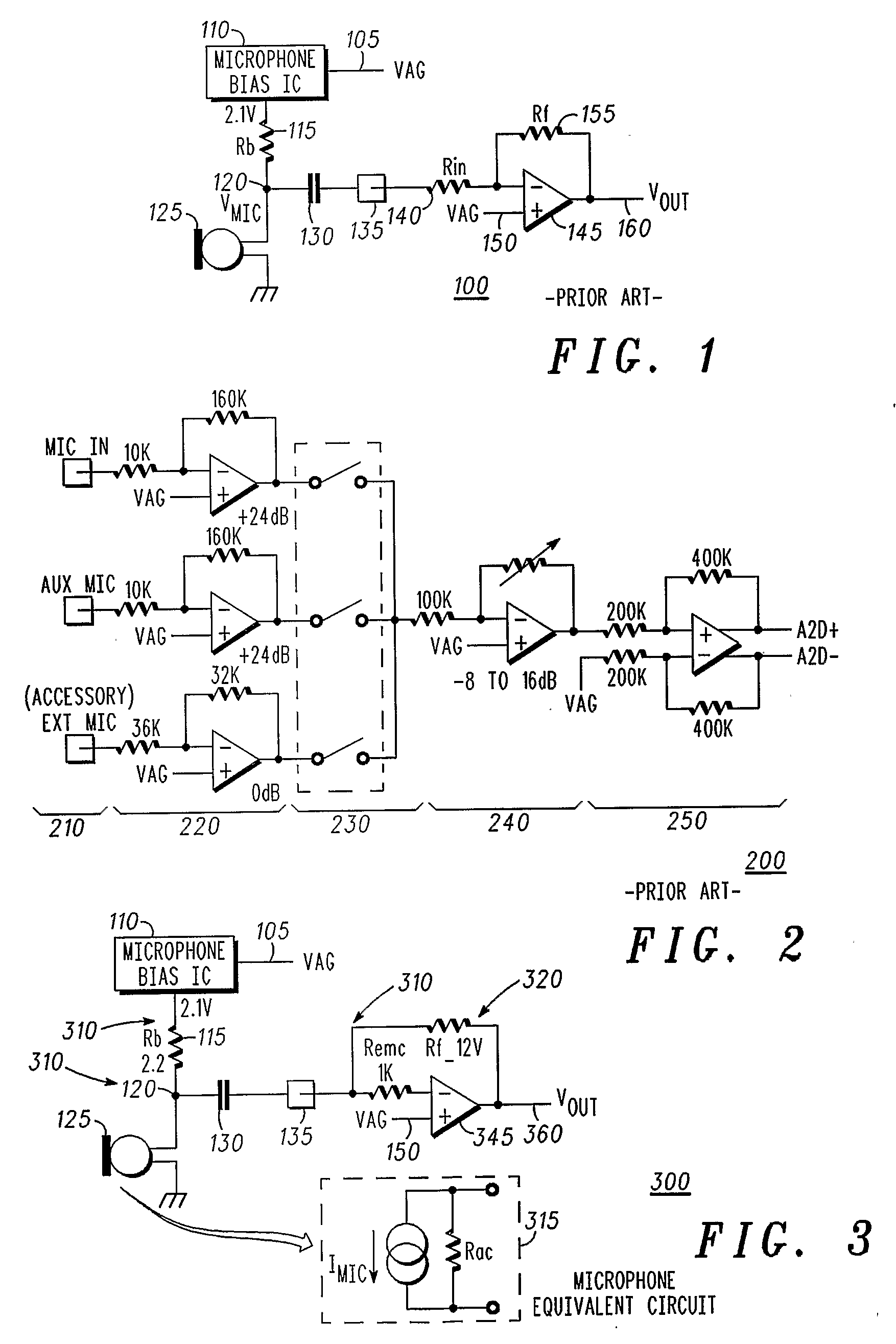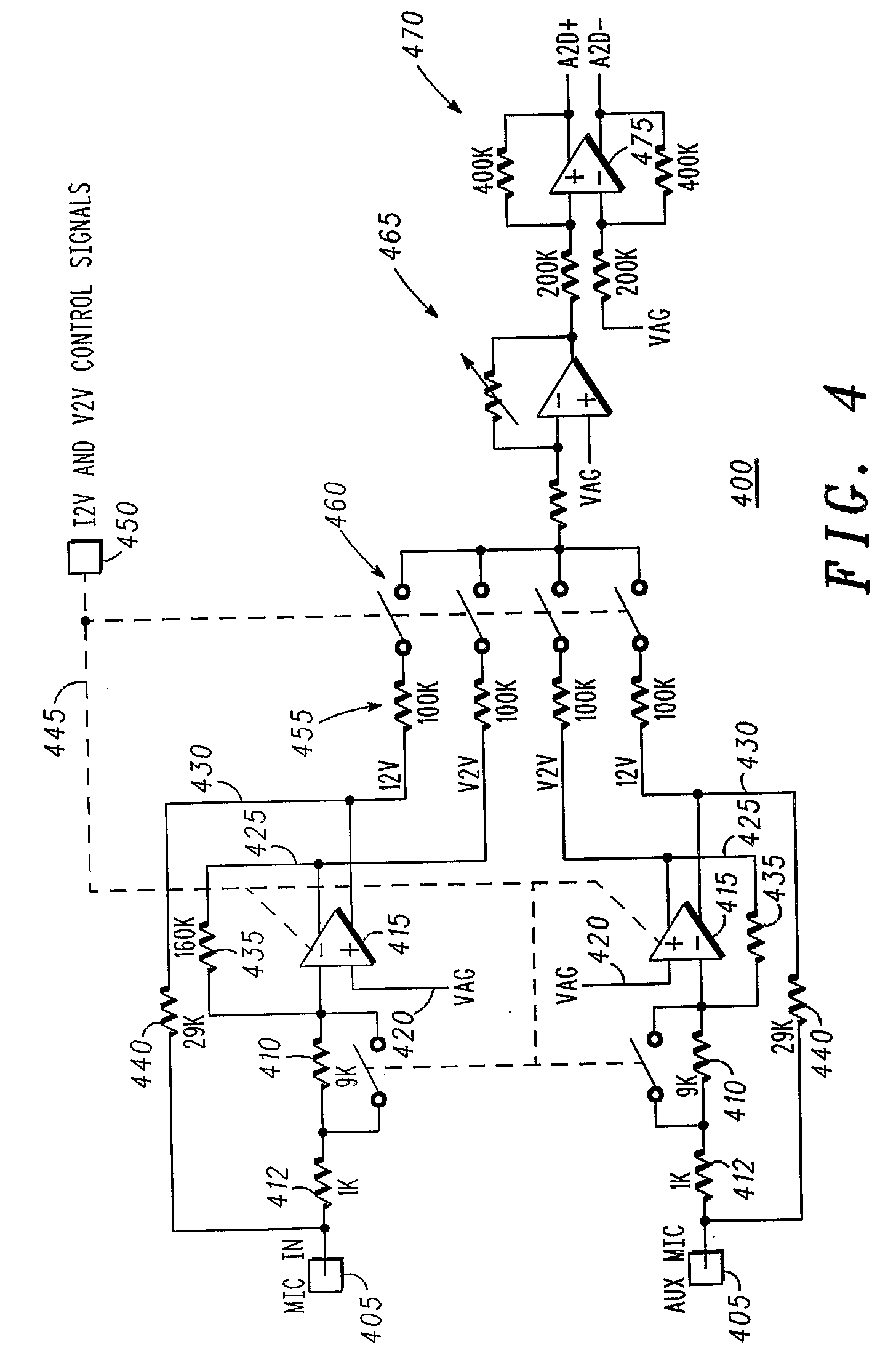Microphone Amplification Arrangement and Integrated Circuit Therefor
a technology of microphone amplifiers and integrated circuits, which is applied in the direction of low frequency amplifiers, electrophonic musical instruments, instruments, etc., can solve the problems of thermal noise in the input signal path, adversely affecting the amplifier portion of the ic, and noise generation
- Summary
- Abstract
- Description
- Claims
- Application Information
AI Technical Summary
Problems solved by technology
Method used
Image
Examples
Embodiment Construction
[0027]In summary, the preferred embodiment of the present invention provides a microphone amplification system that supports existing V2V microphone amplifier applications as well as incorporating a selectable low-noise I2V implementation. Advantageously, the proposed microphone amplification system uses only one amplifier core and provides sufficient EMI protection.
[0028]In mobile phone applications, the microphone is usually an electret condenser microphone, which can be considered as a current source whose value changes with the acoustic pressure applied on the diaphragm. The equivalent circuit includes an equivalent resistance, which is made of the microphone internal resistance Rac in parallel with the biasing resistance Rb and the input resistance Rin of the associated pre-amplifier. The microphone internal resistance Rac and the biasing resistance Rb are set by the microphone manufacturer. Typically Rac>>Rb and Rb=2.2 k.
[0029]Hence, the inventors of the present invention have...
PUM
 Login to View More
Login to View More Abstract
Description
Claims
Application Information
 Login to View More
Login to View More - R&D
- Intellectual Property
- Life Sciences
- Materials
- Tech Scout
- Unparalleled Data Quality
- Higher Quality Content
- 60% Fewer Hallucinations
Browse by: Latest US Patents, China's latest patents, Technical Efficacy Thesaurus, Application Domain, Technology Topic, Popular Technical Reports.
© 2025 PatSnap. All rights reserved.Legal|Privacy policy|Modern Slavery Act Transparency Statement|Sitemap|About US| Contact US: help@patsnap.com



